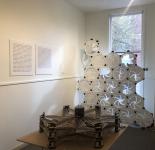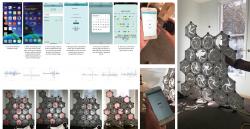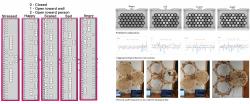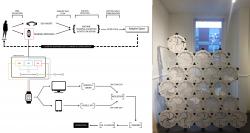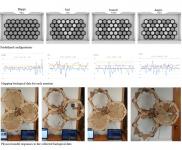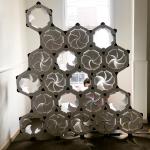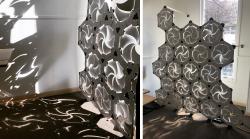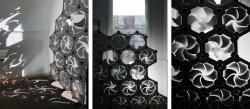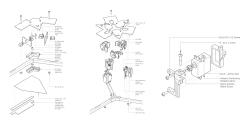Building energy consumption accounts for about 40% of the total energy consumption in the U.S. This energy is mainly used for lighting, heating and cooling, and ventilation. Much research has been done in the areas of occupant behavioral modeling in buildings (and associated energy use), occupant comfort, social-psychological factors in the built environment. However, behavior-based energy efficiency strategies (e.g., the feedback loop between the occupant and building in real-time) in which the building interface allows occupants to interact with the built environment need further exploration. The critical role of the human-building interface in optimizing energy is largely ignored due to unknown interface designs and interactions and complicated variable interactions between occupant comfort, knowledge of systems/controls, behaviors, and resulting building energy use.
To fill this gap, the objective of this project is to optimize building energy retrofits by focusing on behavior-based energy efficiency strategies and creating smart environments that autonomously respond to the occupants’ comfort level using affective computing, Artificial Intelligence, and adaptive systems. This occupant-oriented and adaptive approach will help us to improve sustainability and energy efficiency without sacrificing occupant comfort.
Through passive cooling and heating strategy, these cognizant spaces autonomously respond to occupants’ preferences decoded from their biological and neurological data. based on the body temperature, CVP, GSR, and heart rate, the feeling of hot or cold was detected and the shell opens/closes the panel accordingly to offer passive cooling and heating system.
This project is a smart shell that can be controlled by occupants’ biological signals in real-time and change according to environmental and user data. It is a flexible and reconfigurable shell that can undertake different configurations through kinetic components. To achieve the goal of this project, we have to take a multi-faceted approach. Part of it is engaged in a sensory network of collecting, measuring, and analyzing biodata and understanding the human condition while other parts focus on translating signals into actionable changes in an adaptive shell which involve adaptive structures, actuation systems, and materials that can respond in kind. We want to address this research question: How can such smart environment retrofits measurably improve the well-being of occupants by autonomously responding to their comfort needs while improving sustainability in buildings.
2020
2020
Our approach is to use fuzzy logic and machine learning techniques, e.g., deep neural networks, to create emotion recognition algorithms. Efficient and interactive ground-truth data collection solutions will be used for training these algorithms. This system was implemented based on a TCP/IP-based client-server network to allow independent implementation (and hence easy expansion) of various emotion recognition software and hardware tools.
This smart environment can address the issue efficiently by meeting needs automatically and through a network of ambient sensors and a human-building interface. These sensors sense the biological and neurological signals of the occupants, e.g., EEG headset, wearable biological sensor. The collected data, e.g., heart rate, body temperature, and skin conductance, is analyzed to extract the desire for light/heat/ventilation/view. A mobile app is developed for this project that shows the biosignals and the user’s emotions in real-time. If our developed Machine Learning algorithm recognizes high temperature or sad or stress mood, it communicates the hot feeling or sad feeling with the shell that resulted in more opening in the shell. Here, changes in the shell enclosure and interior spaces are the direct result of the biological, mental, and environmental needs of their users.
Such adaptive and in-situ modifications have significant potential to reduce energy consumption, as opposed to existing solutions, especially in the commercial sector, making generic assumptions about the occupants’ preferences. They can also provide localized comfort settings for different individuals in shared housing conditions (i.e. dormitories and/or shared apartments).
The research aims to improve occupant comfort by localizing comfort settings for different individuals and in turn energy optimization and environmental sustainability. Other significant applications of this work, in addition to the energy efficiency area, are in the medical field via assisting people with disabilities, neuromuscular diseases, motor system disorders, and elderlies, ultimately empowering individuals with physical challenges to regain control over their environments. This aids in meeting the growing demands of the aging population and at-home health care. Our work contributes to the design of future spaces conceived as living organisms and creates a link between human behavior and the built environment with the real-time response using embedded responsiveness and material intelligence.
Design: Mona Ghandi, Christopher Kinney
Fabrication: Mona Ghandi, Mohamed Ismail, Aisha Marcus, Jessie Lu
Electrical and Programming: Sal Begavav, Marcus Blaisdell, Mona Ghandi, Christopher Kinney
Cinematography: Mohamed Ismail, Nicole Liu
Optimizing Building Energy Retrofits Through Cyber-Physical Adaptive Spaces, Artificial Intelligence, and Occupants’ Biosignals by Mona Ghandi in United States won the WA Award Cycle 41. Please find below the WA Award poster for this project.

Downloaded 0 times.





